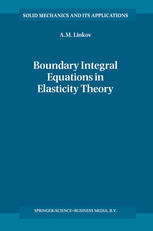

Most ebook files are in PDF format, so you can easily read them using various software such as Foxit Reader or directly on the Google Chrome browser.
Some ebook files are released by publishers in other formats such as .awz, .mobi, .epub, .fb2, etc. You may need to install specific software to read these formats on mobile/PC, such as Calibre.
Please read the tutorial at this link: https://ebookbell.com/faq
We offer FREE conversion to the popular formats you request; however, this may take some time. Therefore, right after payment, please email us, and we will try to provide the service as quickly as possible.
For some exceptional file formats or broken links (if any), please refrain from opening any disputes. Instead, email us first, and we will try to assist within a maximum of 6 hours.
EbookBell Team

4.4
62 reviewsby the author to the English edition The book aims to present a powerful new tool of computational mechanics, complex variable boundary integral equations (CV-BIE). The book is conceived as a continuation of the classical monograph by N. I. Muskhelishvili into the computer era. Two years have passed since the Russian edition of the present book. We have seen growing interest in numerical simulation of media with internal structure, and have evidence of the potential of the new methods. The evidence was especially clear in problems relating to multiple grains, blocks, cracks, inclusions and voids. This prompted me, when preparing the English edition, to place more emphasis on such topics. The other change was inspired by Professor Graham Gladwell. It was he who urged me to abridge the chain of formulae and to increase the number of examples. Now the reader will find more examples showing the potential and advantages of the analysis. The first chapter of the book contains a simple exposition of the theory of real variable potentials, including the hypersingular potential and the hypersingular equations. This makes up for the absence of such exposition in current textbooks, and reveals important links between the real variable BIE and the complex variable counterparts. The chapter may also help readers who are learning or lecturing on the boundary element method.